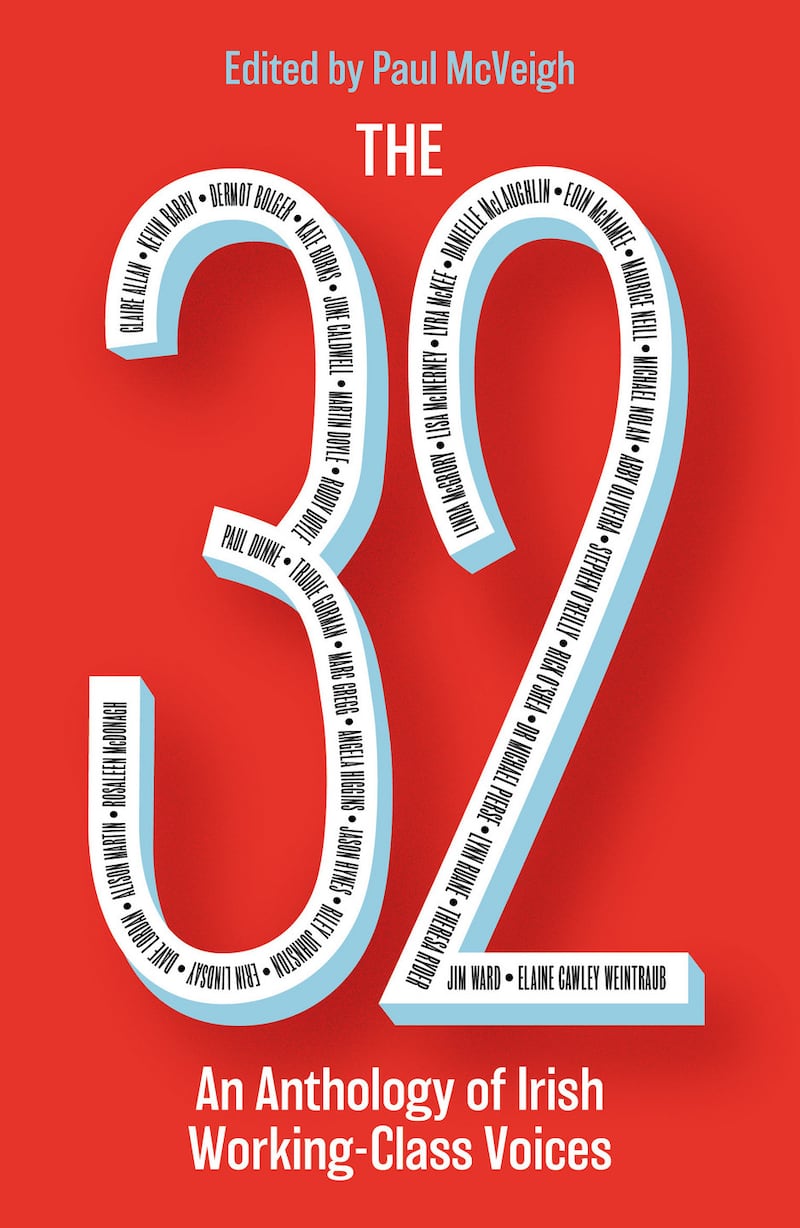Putrid currents floated trout to the loch,
Their bellies white as linen tablecloths
- Seamus Heaney, Lint Water (1965)
When I was a child, I thought I could end up in prison. It is said you can only be what you can see and on the nightly news I saw a steady stream of working-class Catholics being sent to jail. Growing up in the North during the Troubles, this was just another prospect to be internalised, like being murdered or unemployed.
When our parents went shopping, we children would stay in the car. Every high street was a Control Zone where, to deter car bombs, vehicles could not be left unattended. The longer we were left, though, the more I began to wonder whether my parents might be bombers and we sacrificial lambs. It was a strange time. I have trust issues.
My story, like so many Irish stories, is a migrant tale. My mother is from Down and my father from Wexford. They met in the Gresham in 1962 – not the smart hotel on Dublin’s O’Connell Street but the ballroom on London’s Holloway Road, a meeting place and a melting pot for so many working-class Irish of their generation.
Brendan Bowyer was playing that night with the Royal Showband. Thirty years later, my mother queued for his autograph at the Rose of Tralee Festival. She got him to inscribe on a card, much to my father's amusement: Woe the day!
My parents moved home to get married, settling first in Summerhill in Dublin's north inner city. "John hasn't just brought you to one of the worst areas in Dublin," his best man, a Garda, said cheerfully, "he's brought you to the worst area."
Actually, the neighbours could not have been kinder and it was with mixed feelings that my family moved North after my sister Andrea was born to make a life in Lawrencetown, my mother’s native village.
In the literature of the working class, the rural experience is the poor relation.
In the 1970s, the iconography of the industrial working class seemed a world away. Yet in a five-mile stretch along the river Bann between Banbridge and Gilford, eight linen mills had once employed thousands of workers, including my grandfather Arthur Pat Byrne and his sister Lizzie at Uprichard’s Bleach Green.
Violence and sectarianism also loomed.
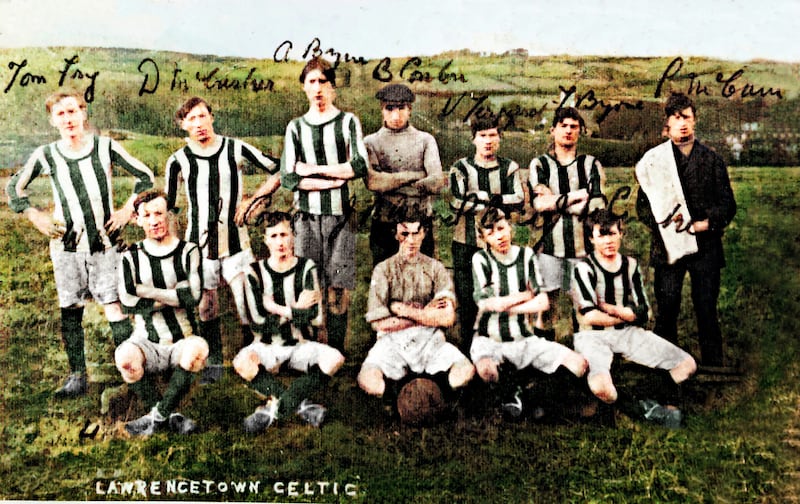

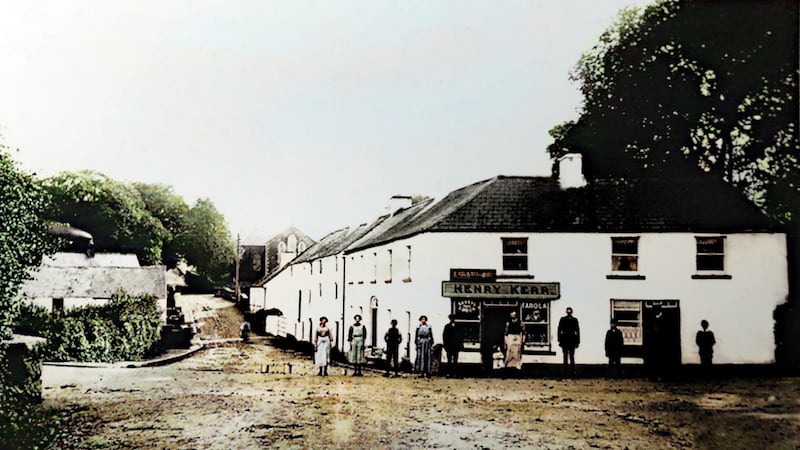
In July, 1920, the IRA had shot dead Lt Col Gerald Bryce Ferguson Smyth, RIC Divisional Commander for Munster, in Cork city. He was alleged to have advocated a “shoot now, ask questions later” approach to Sinn Féiners when addressing members of the RIC at Listowel, Co Kerry, which prompted many to quit the force. It also had repercussions in the North. Smyth was the son of a well-known linen family and his funeral in Banbridge led to fierce rioting and attacks on local Catholics, while in Belfast thousands of Catholics were expelled from the shipyards and other industrial works by loyalists. Almost 500 people were killed in Belfast alone in the period July 1920-October 1922, more than half of them Catholic despite making up only a quarter of the population.
On August 22nd, Det Insp Oswald Swanzy, the alleged ringleader in the assassination that March of Tomas Mac Curtain, the Lord Mayor of Cork, was himself assassinated by the IRA in Lisburn, Co Antrim, 20 miles away from Lawrencetown. At his side was Frederick Ewart, a wealthy linen industrialist. The weapon used was reputedly Mac Curtain’s legally-held revolver, for which Swanzy had signed the license. In the ensuing riots, many Catholic homes and businesses were looted and burned, and most Catholics fled to nearby Belfast. There was no safety to be found there either.
On September 3rd, 1920, a local hoodlum home from the US known as the Yankee Conlon shot and killed a local Protestant, William McDowell, who was transporting wages to Gilford Mill. Earlier that year, masked men had burned Lawrencetown’s police barracks. So, before Conlon was caught, the IRA was blamed. A meeting in Gilford’s Orange Hall agreed that mill owners and their Protestant workers would turn away every Catholic who refused to sign a form renouncing Sinn Féin. The vast majority, including Arthur Pat, refused. And so, out of a job, he moved to Rostrevor for work and his sister Lizzie left for Canada. They never saw each other again. He couldn’t bear having to say goodbye twice.
“The grass will grow green over their factory chimneys,” the local parish priest prophesised, “and there will be work for neither Catholic nor Protestant. I might not live to see it but some of you will.”
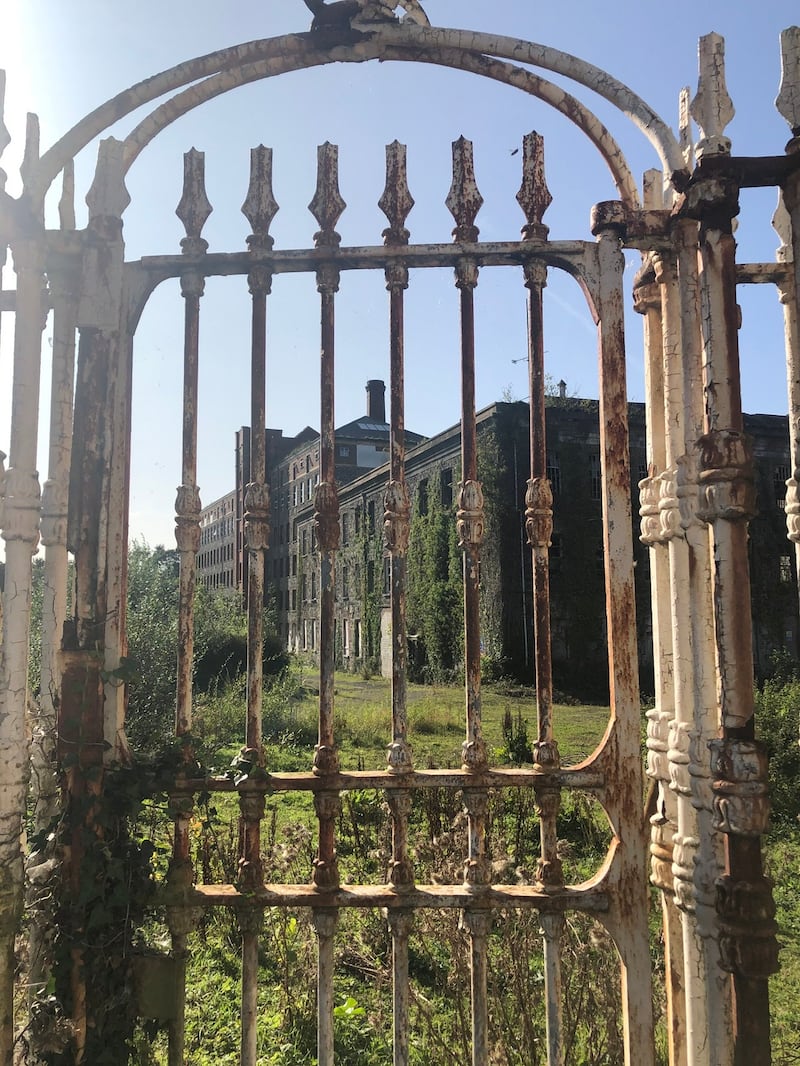
He was right. But though the work ran out, one thing the North of Ireland has never run out of is dirty linen. Initially, when the Troubles erupted again in 1969, they seemed to youngsters in rural Co Down a world away, in Derry and Belfast. But violence stalked us too.
In February 1989, Pat Feeney, 32, the older brother of a former classmate, was murdered while working as a nightwatchman at another linen factory, Liddell’s, in nearby Donaghcloney, whose prestige products saw service on both the Titanic and Concorde. My mother had worked there too, saving enough to open a clothes shop.
John Michael Feeney, Pat’s uncle, was murdered with two other Catholics at Bleary Darts Club in April 1975. He was with his son Jimmy, who had just won an all-Ireland boxing championship. He died with his son’s medal in his hand.
The killers belonged to the loyalist Glenanne gang, which included many RUC and UDR men. It was responsible for up to 120 murders, several of its victims from my neighbourhood. The first, in October 1973, was Pat Campbell, a shop steward at the Down Shoes factory in Banbridge. His widow identified a workmate as one of the killers but the murder charge was dropped. The accused would become a serial killer, allegedly on a State retainer, notorious for atrocities such as the Dublin bombings and the massacre of the Miami Showband after they played the Castle Ballroom in Banbridge.
The shoe factory shut in 2002. Across the road is the FE McWilliam Gallery, showcasing the work of the brilliant Banbridge-born artist whose bomb-blasted Women of Belfast sculptures capture the terror and tragedy of the Troubles.
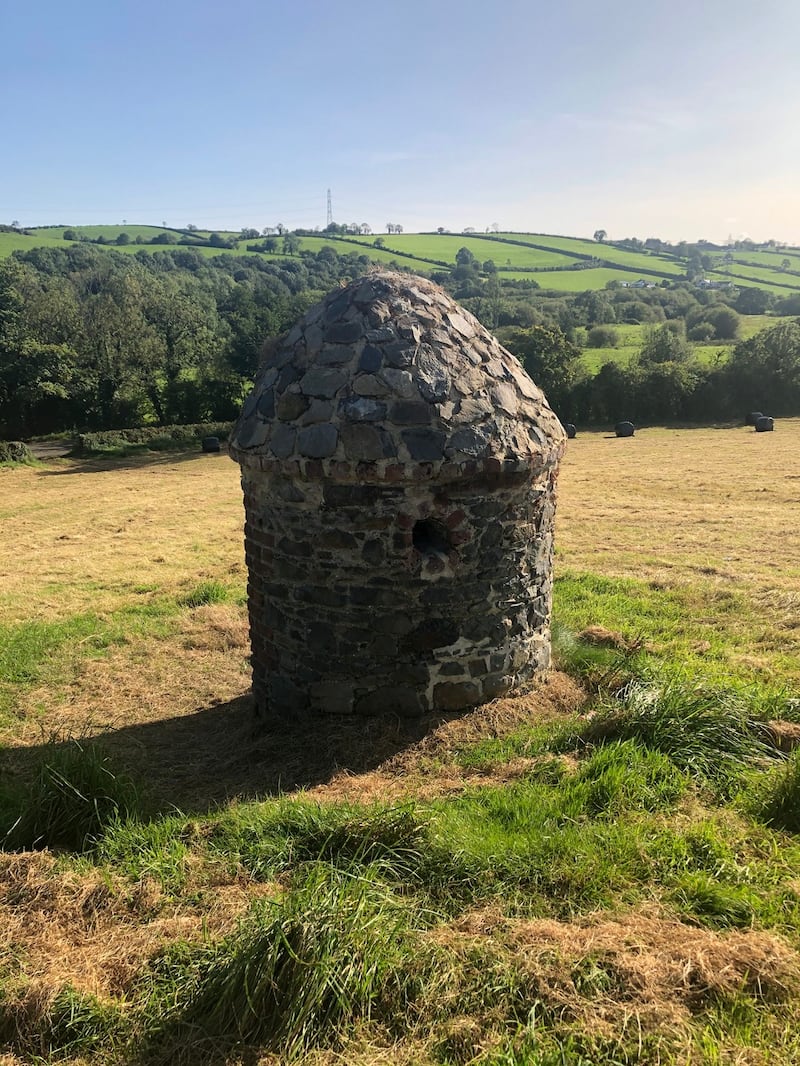
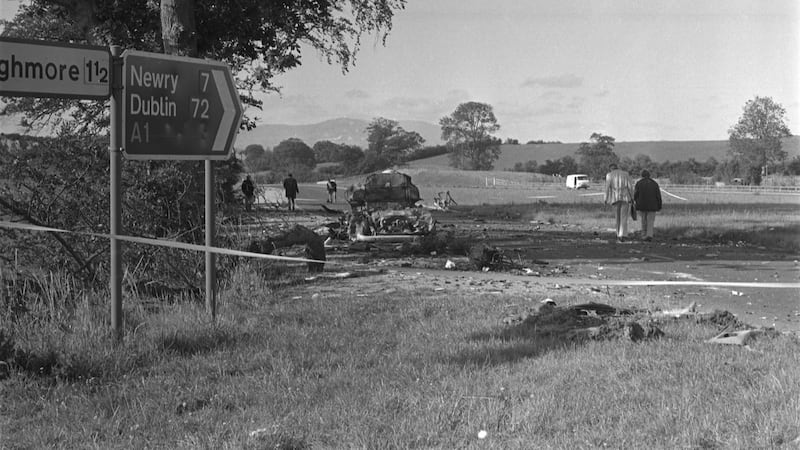
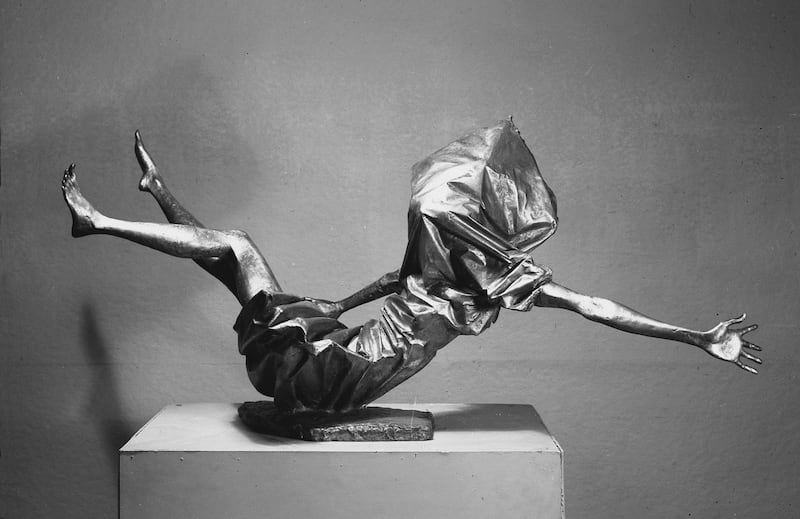
Another classmate’s father, Joseph Fegan, a lorry driver, was one of nine people killed in August 1972 in the Border customs office in Newry, when an IRA bomb went off prematurely. The republican paramilitaries, who purported to be the protectors of Catholics, in fact killed hundreds of them and, in their attempt to blow away the Border, only entrenched it. The message of Bloody Sunday and the Ballymurphy Massacre, meanwhile, was that the British army could not only kill us but do so with impunity.
For much of my childhood, my mother worked as a school dinner lady, which was a win when it came to second helpings. My father worked in Goodyear – we had a glass ashtray with a rubber tyre around the rim. Daddy also brought home an ugly chunk of untreated rubber, like a hunk of raw meat gouged from an animal. It felt colonial. Goodyear bailed, as multinationals often do, in 1983.
My working-class relationship status is complicated. Growing up in a sectarian slum, social stratification by class did not shape me to the extent it might had my parents not left Summerhill. Trade union leaders called for peace but the inspirational solidarity of striking miners in Britain or Dunnes Stores workers in Dublin in the 1980s was never achieved. For me, the most formidable display of the power of organised labour was the Ulster Workers’ Council strike in 1974, when pickets, given muscle by loyalist paramilitaries, brought down a power-sharing government and delayed peace by a generation.
As a journalist, the first person I ever interviewed, for the Banbridge Chronicle, was an impeccably middle-class Catholic senior civil servant who had risked his life to defy those strikers and keep the lights on. A hero in pinstripes.
Irishness and Catholicism were the active ingredients in my identity then, class the unconsidered filler. I digested pretty much every Irish fiction title in the local library, from Joan Lingard to Brian Moore, Jennifer Johnston and Frank O'Connor, running into a brick wall only with Breandán Ó hEithir's Willie the Plain Pint agus An Pápa, which turned out to be in Irish, a bridge too far. (I could and did study French, German, Spanish, even Latin at school, but not my ancestral language.)
I took Graham Greene, Evelyn Waugh and David Lodge for the Catholicism. Working-class writers were part of the mix too: Christy Brown, Shelagh Delaney, Alan Sillitoe, David Storey and Keith Waterhouse, whose character Billy Liar, another Northerner, albeit an English one, with notions of escaping to the bright lights down South, said: “I turn over a new leaf every day. But the blots show through.” Books connected me to a more benign Britain than the benighted regimes that misruled the North.
But class consciousness was not really a thing for me, perhaps because reality belied any notion of class solidarity surpassing the religious divide. In our low-level civil war, sectarian trumped proletarian, belligerents on both sides largely drawn from the working class, divided by a common rung.
Certainly, there were class-based divisions within unionism and nationalism. Sinn Féin dismissed the SDLP as a party of school teachers and accountants. The DUP painted the Official Unionists as out-of-touch elitists, the fur coat brigade. But these differences were understood to be secondary concerns.
Home until I was 13 was a council estate. It would have been described in the jargon of the time as "predominantly Catholic". That it was exclusively working class was unspoken - a given. It was named after a unionist councillor, of course, just as the village was named after the Anglo-Irish landlord, although the latter had gifted the land on which the Catholic church was built.
The estate had been a big step up for most of its residents. When first built, to secure a house there, you had to be living in a place condemned as unfit for habitation. Our most famous neighbour was Maggie Barry, a singer from a Travelling background who once shared a bill with Bob Dylan. Her legacy is not officially recognised. You don’t see plaques on pebbledash.
The houses weren’t big. The parish priest once pronounced that one should sit eight feet back from the TV set. Doing so would have meant moving the settee halfway down the front path.
It was a close-knit place, with several large local families intermarried over generations. We were in and out of each other’s houses all the time. When we locked ourselves out, a regular occurrence, my cousin Julie was called on to stick her skinny arm through the letter box and twist her hand up to open the lock.
Community centred round the chapel and the GAA pitch. I was an altar boy. We enjoyed the perks as well as the pranks – 50p for a funeral; £1 for a wedding; and, unofficially, all the communion hosts we could eat (unconsecrated - we weren’t monsters) and altar wine we could drink (putting me off sherry for life).
Not everyone back then could afford a car, so traders came calling in their vans. So too in summer did the mobile library, where you could borrow twice as many books as from the town library. Books were accessible in a way theatre, galleries, even cinemas on the culturally impoverished periphery were not.
Brian the Butcher’s complexion was the colour of a beef sausage; the fishmonger called out Hernahernahern, hawking herring as if campaigning for a future taoiseach. Our milkman was Barney O’Dowd – we called our rocking horse after him. I was fascinated by his big leather satchel full of coins, like a pot of gold. Our coalman was his son Declan – my parents were so fond of him, they gave my brother Shane the middle name Declan.
The Glenanne gang murdered Declan at 19 years of age, along with his brother Barry and uncle Joseph. It is said they were targeted because they were in the SDLP. John O’Dowd, their cousin and a classmate of mine, would become a Sinn Féin Minister for Education at Stormont. Barney was seriously wounded, moving South after he recovered. I never saw him again.
There weren’t many amenities. Without being prolier than thou, the playground was called the Dirt Track. Still, my childhood was Heaneyesque: blackberry picking; playing football till the light faded so the ball was only a blur; putting slack on the fire; peeling potatoes either side of a pot.
Using the linen industry as a metaphor for the sectarianism that still stains the North is Heaneyesque too. In his poem Lint Water, published in the Times Literary Supplement on August 5th, 1965, the industry’s poisoning of running water symbolises a tainted land. As Roy Foster pointed out in On Seamus Heaney, “Northern Irish readers would be well aware that historically, linen making was notably sectarian in its work patterns”.
Ciaran Carson picked up the theme in his poem Turn Again: “The linen backing is falling apart – /the Falls Road hangs by a thread.”

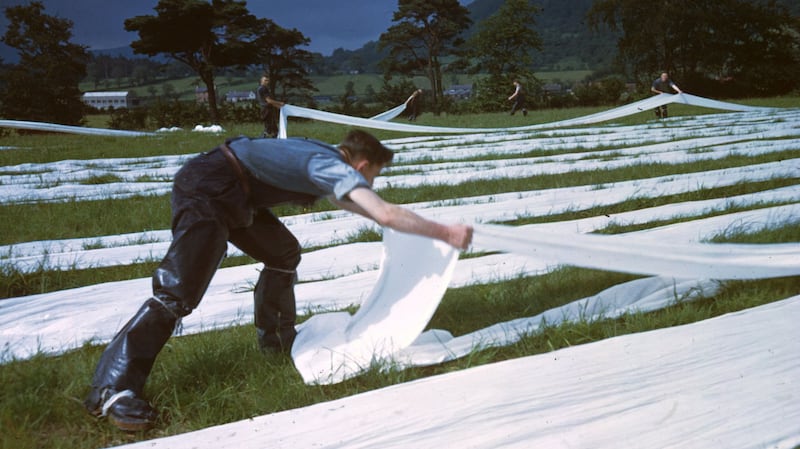
Wanting the opportunities for us that had been denied to them, my parents brought us to the library every week as faithfully as to Mass – literature and liturgy. The Eleven Plus exam created a new divide – streaming us into comprehensives or grammar schools. The unfairness of having your educational fate sealed at 11 years of age is stark. Ostensibly meritocratic, the test is won or lost on a playing field that is never level, where middle-class children will always have home advantage. It was a ladder for me but a snake for many others.
Most who passed went to Catholic grammar schools in Newry. I, like my siblings and cousins, went to Banbridge Academy, a state grammar and thus effectively a Protestant one, Catholics making up roughly 10 per cent – not so much mixed or integrated then as slightly diluted Orange. One lunchtime, the deputy headmaster entertained pupils with a rendition of The Sash. I recall a teacher stopping his car in the pouring rain to send a pupil home for wearing a duffel coat, not the regulation gabardine. He wasn’t the only culprit, but he was the only Catholic. Back then, it was a cold house for Catholics. We were admitted but not accommodated.
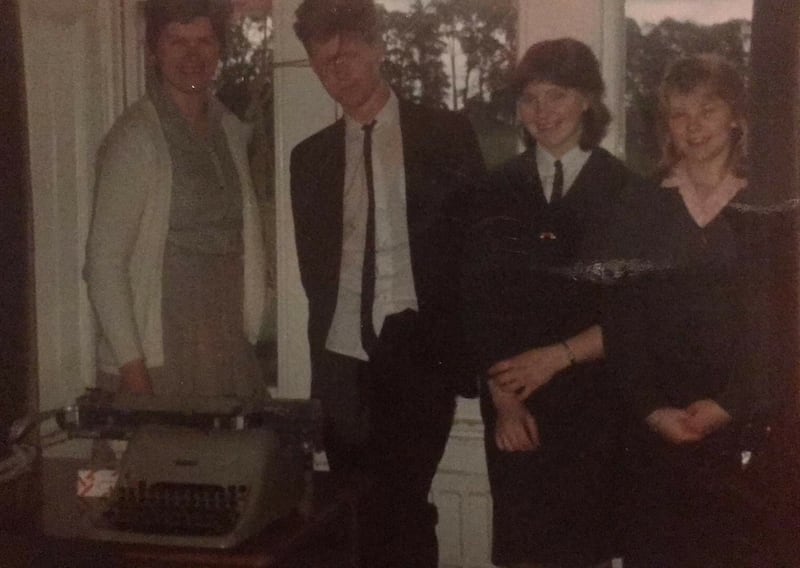
Every day someone called me a Fenian or a Taig – meaning that to them I belonged to the underclass: feckless, dirty, disloyal. Sectarianism was not an undercurrent, it was a riptide so vicious it cannot have gone unnoticed among teachers, yet they appeared to be oblivious. Reading aloud a role in a play we were studying in English, I refused to say the word Papist, drawing a line that the abuse I experienced in the corridors should be normalised in the classroom. Another day, I was messing about in class and my science teacher asked me what was so funny. Was it the colours of chalk he was using on the blackboard? I looked up. Green, white and orange, among others. Not my comedy jam, as it happened, but an insight into how his brain was wired.
The vitriol spiked when the IRA murdered a local RUC or UDR man, but parents and pulpits stoked it too. It peaked with the hunger strikes in 1981, when their enemy’s self-sacrifice intolerably won international support. “Could you eat a chicken supper, Bobby Sands?” classmates chanted. “Could you eat a chicken supper, you dirty Fenian f*cker?”
In his contribution to the school history, my brother Shane, now a professor of history at the University of Leeds, wrote: “The petty sectarianism of life outside the classroom sharpened my academic ambition. Repeated reminders that Catholics were stupid provoked the desire to excel, and to leave.”
My father’s American boss had a daughter, a beautiful, golden girl, who was in my Spanish class. I didn’t attempt to compete, however. Even back then I realised nothing would not hold her back. Form is temporary, class is permanent. And privilege rankled less than prejudice.
A new headmaster, Winston Breen, changed things. He went out of his way to prepare Shane for Cambridge. When his brother Harry became the most senior RUC officer to be murdered, he addressed the school on the evils of sectarianism. For me, the deepest divide was between those on all sides who supported the taking of life and those who opposed it.
My German teacher had encouraged me to apply for Oxbridge too, but I chippily said I didn’t want to go to a foreign university. My narrowed mind had narrowed my options. I got over myself and I soon got on the boat.
On March 15th, 1982, two days before St Patrick’s Day when Irish people traditionally celebrate pride in their nationality, an 11-year-old schoolboy, Alan McCrum, was killed by a car-bomb in Banbridge. He was waiting in a jewellers for a lift home, talking about his new watch, when the IRA stopped time for him and warped it permanently for his loved ones. The display clock that hung outside the shop was damaged too, its hands stilled, stuck in the past.
Margaret Yeaman, a mother of four young children, was blinded by the same bomb, and needed over 100 stitches to her face. She grieves that she will never be able to see her grandchildren. Nor can she see her portrait, part of Colin Davidson’s 2014 series on Troubles victims, Silent Testimony.
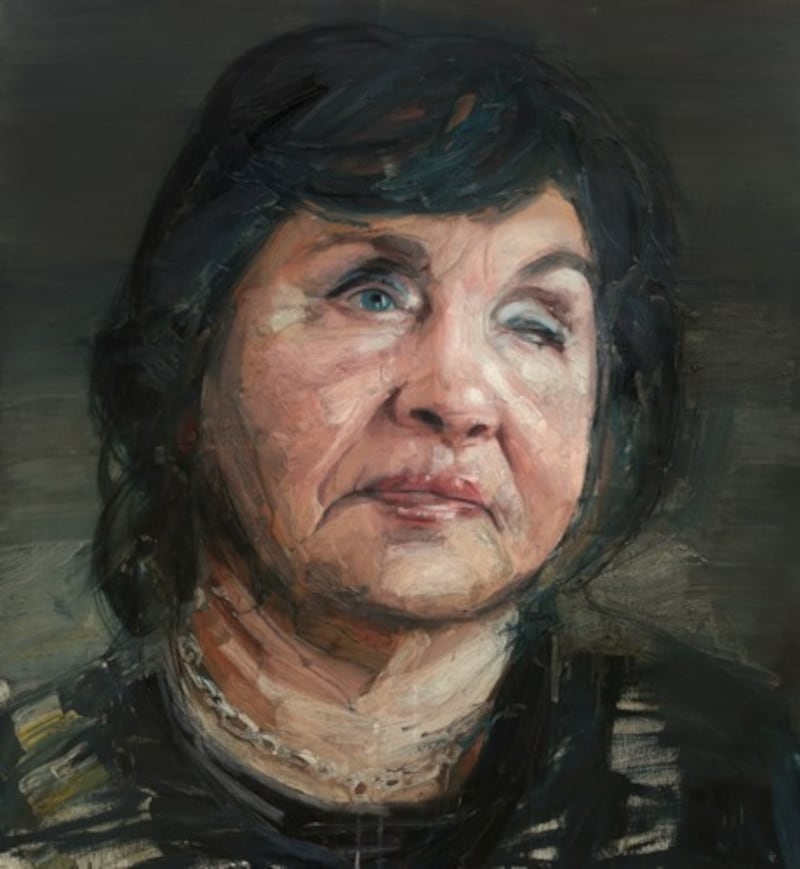
Alienation was the buzzword in my teens to describe how Catholics felt in a political entity designed to deny them their rights and identity. I felt the buzz of recognition when Stephen Rea admired the “appropriate disrespect” his fellow Queen’s student Eamonn McCann showed to the authorities. But I never succumbed to the nihilistic extreme of nationalism that was happy for our gutters to run red while only our rivers ran free.
A blinkered Irish nationalism did sometimes express itself through sport. The village’s crowning glory was an impressive GAA pitch. Woe the day, though, if you were caught playing soccer on it or, worse, cricket. The cricket captain would go on to join the RUC and be bullied out of it for being Catholic. The middle ground was no man’s land. I called once for a friend to play soccer and he said that it was a foreign game. We had played it all our lives. He had a Manchester United replica jersey. That’s how wrong he was.
Daddy filed the football match reports for Lawrencetown Swifts to the Banbridge Chronicle under the pen name Coubray, the name of the field where they played. I use the term advisedly as they shared the pitch with a herd of cattle, which meant you were lucky if you finished a match covered only in mud.
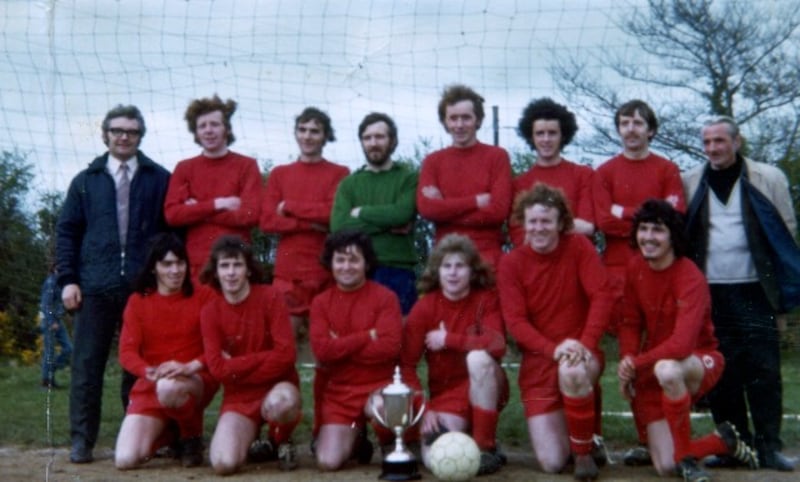
I became Coubray Junior and got a taste for journalism, as did my brother Garry. My Dad kept a scrapbook of his clippings, which I read as enthusiastically as comics such as Tiger & Scorcher and Whizzer & Chips. (I kept clippings for my kids but they just call me a hoarder.)
I even founded my own newspaper, the Doyles Weekly Herald, when I was 10. The first and only copy is dated April 16th, 1978. The title’s political leanings can be gleaned from a centre-spread on Margaret Thatcher, still over a year away from becoming prime minster. There is no actual text – I mustn’t have pressed Save – but the illustrations under the subheading “Her favourite photographs” include Willie Whitelaw, Enoch Powell, piles of banknotes and coins, Jack the Ripper and Al Capone, plus a portrait of Thatcher with a pirate’s eyepatch and horns.
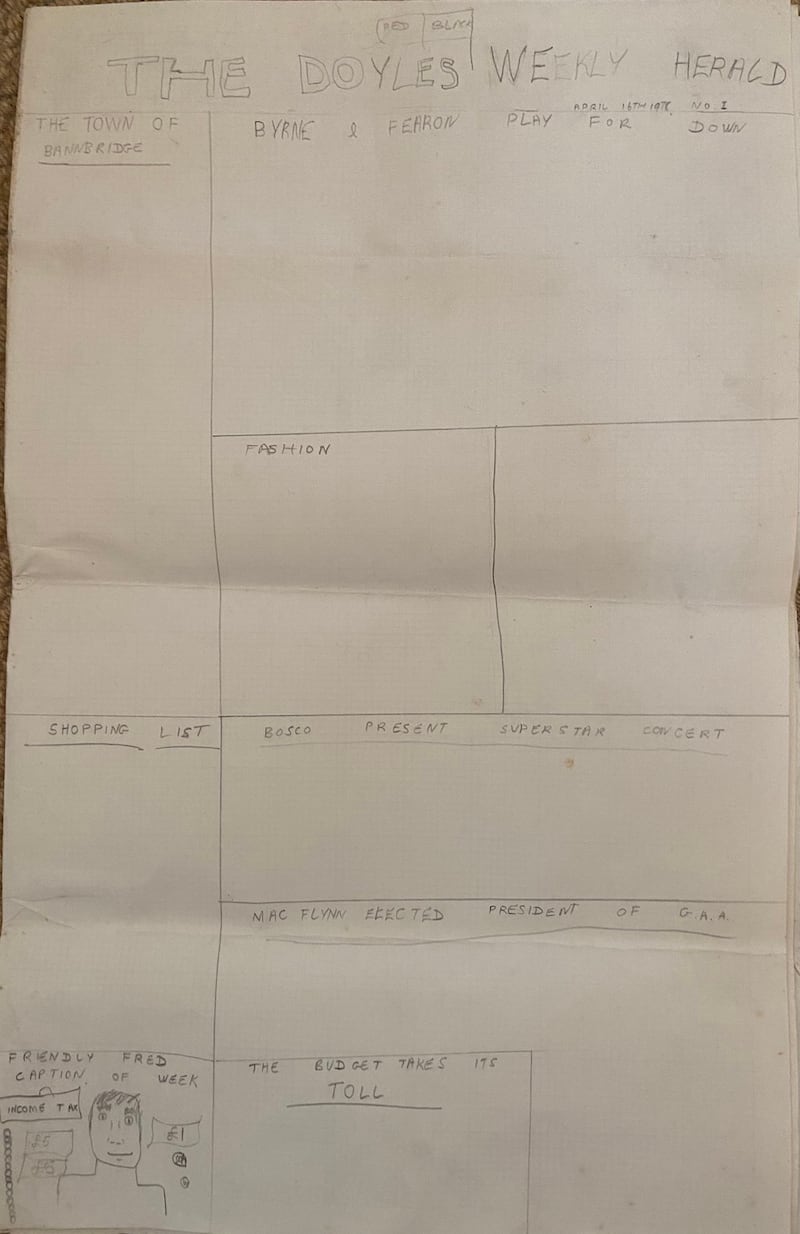
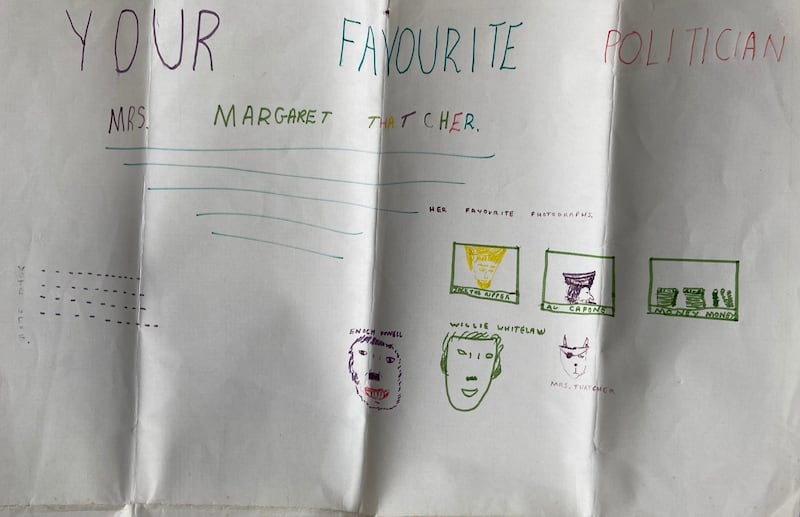
My grandfather Arthur Pat was another big influence. He wrote and directed plays and was a great storyteller. Visiting him, however, was another form of Vatican roulette. If you were lucky, you got a fireside story, a mug of cocoa and a soda farl with butter and jam. If you were not so blessed or, rather, more, you got five decades of the Rosary, with all the trimmings.
I used to earn pocket money collecting my grandparents’ laundry. Granny usually paid in silver coins but once it was Granda, who paid in coppers, prompting me to plaintively ask Mum whether he understood decimal currency.
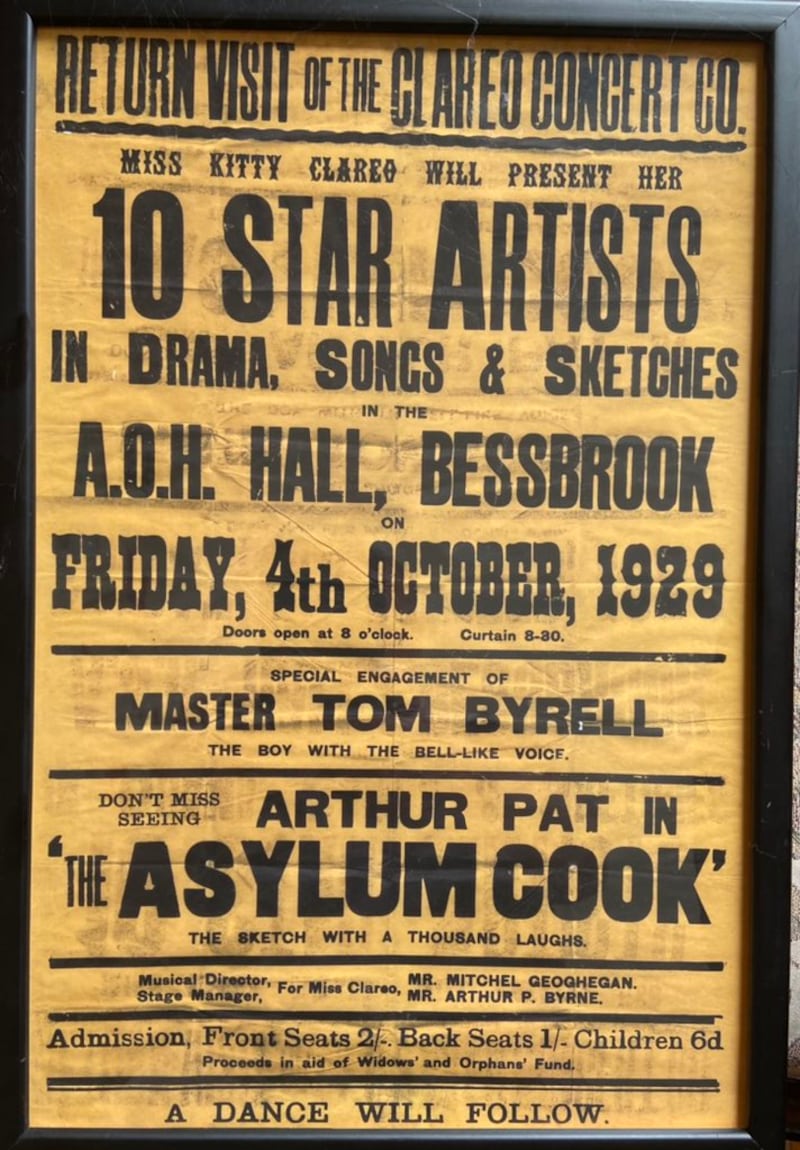
My first regular job was at my uncle’s filling station. When he opened his business he received a death threat from loyalist paramilitaries. Catholics did not have to join the IRA or Sinn Féin to pose a threat. Seeking to advance socially or economically was subversive enough. Croppies refusing to lie down. But he survived and prospered, even if his nephew occasionally confused orders for petrol and diesel.
When I was 13, we moved to a bungalow on the other side of the Bann. We had a ludicrously large front garden, in truth a field so full of weeds, the only remedy allegedly was to plant it with potatoes, the picking of which was delegated downwards. If this back-breaking bending was social climbing, it felt counter-intuitive. My lower-middle-class life had got off to a very unpromising start.
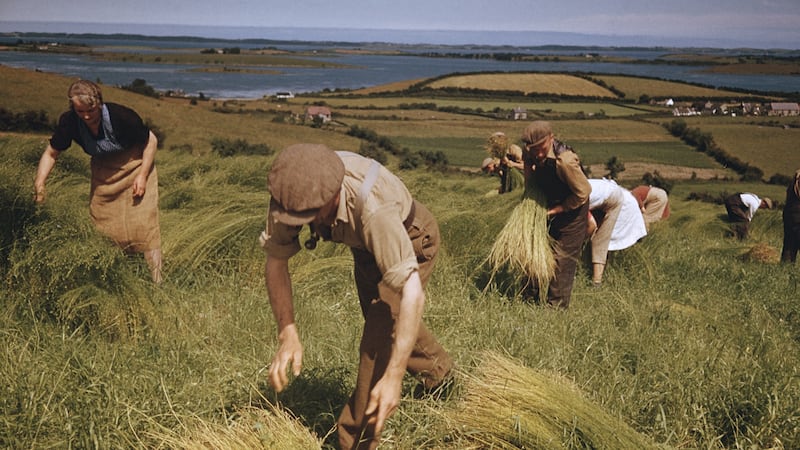
Poor Shane had it worse. If there is one thing worse than lifting spuds, it is pulling flax. A local entrepreneur needed labour and Mummy knew just the boy. Forget grinds. Nothing focuses a student’s mind like the grind of agricultural labour.
Something was lost in the transition, though. My other grandfather Bill “Slater” Doyle was a roofer like his father before him and built himself a fine house. The closest I have ever come to our roof is releasing the catch on the folding ladder to boldly go into the attic.
Drawing the dole; signing on; doing the double; collecting the bru; social security – the numerous euphemisms for unemployment benefit I acquired aren’t quite up there with Inuit words for snow but they speak to the centrality of the experience. The first thing I did when I left school was sign on; the same when I went to London after my first year at university in St Andrews. There was a precariat before the word.
My upbringing has not completely defined me but it certainly colours how I perceive the world and understand society. Our sky was lower, our horizons closer. Our first and only family holiday abroad was just before my 16th birthday. That said, we were lucky in that Daddy’s parents lived near Courtown, a Co Wexford seaside resort, and – bonus points – my aunt owned the chip shop, meaning free chips. To replicate that buzz as an adult you’d need to be a gambler in Vegas.
Aunt Peggy is the Doyle family historian, author of a book on the Coolgreaney evictions in 1887 when 60 Co Wexford families including a branch of our own were crowbarred from their homes during the Plan of Campaign. She unearthed in Collins Barracks a photograph of my great-uncle John O’Donohoe marching with fellow Irish Volunteers with Mausers from the Asgard in Howth in July 1914. (It’s not a war crime but John has my father’s ears.)
Peggy also showed us the bullet hole in the wall where District Inspector Percival Lea-Wilson had been shot dead on June 15th, 1920. After the rebels surrendered in 1916, Michael Collins witnessed him humiliating Tom Clarke, one of the signatories of the Proclamation, by having him stripped naked. (Lea-Wilson’s widow Marie gave a painting, later identified as Caravaggio’s The Taking of Christ, to the Jesuits in gratitude for their support after her husband was killed.)

But all that was in the past. Uncle Ray in Galway assured me the South wanted nothing to do with the North. Uncle George in Gorey wasn’t so sure, however. There was plenty of republican sympathy in the heartland of the 1798 Rebellion. As Editor of the Irish Post, I interviewed the Gorey-born Irish ambassador to Britain, Ted Barrington, whose skipping of the revolutionary generation to cite as his heroes Parnell and O’Connell – “people who used constitutional methods to achieve real change and benefits for people” – I thought significant. But sure enough, on February 1996, nine days after the Docklands bombing broke the 1994 IRA ceasefire, 21-year-old Ed O’Brien from Gorey was blown up by the bomb he was carrying on a London bus.
I saw myself as a moderate. I had a relative in the police and we played squash in the bowels of the fortress that was Lurgan RUC station. When I went to Queen’s University Belfast, I played snooker in the Felons’ Club on the Falls with a student whose father had been a republican prisoner, a requirement for membership. I was an equal opportunity sportsman. I lived near the loyalist Village area and faced a moral dilemma when neighbours knocked, collecting for a loyalist band. Inspiration struck. “Thon student doesn’t even understand decimal currency,” they must have said when they emptied their tin.
At St Andrews, where the heir to the British throne followed in my footsteps, I began to notice posh people. It is wrong to make fun of people because of their accent but they were commonly called Yahs. They tied their sweaters round their shoulders, not their waists. They were loud. Even their trousers were loud.
I spoke fast and kept having to repeat myself, so I learned to speak more slowly so that English people could understand me. A public-school girlfriend insisted on giving me a cutlery lesson before we visited her parents. I was now in a world where what mattered was not which foot you dug with but how you held your knife and fork. Great.
A lecturer corrected me when I defined Limbo as a Catholic concept of a post-death state that no longer existed. It never existed, he said, in a tone that did not hide his disdain, though his came from a sense of secular, not sectarian, superiority, which was novel.
I realised that I could become a different, middle-class, person if I wanted. I didn’t really. I turned my back on law and spent the first decade of my career working for Irish community newspapers in London – a vocation, not just a job, recognising in the Irish Diaspora an even more marginalised out-group of the nation.
The peace process, when it started, felt miraculous. The Troubles were all I had known, only the IRA’s Christmas ceasefires an annual inkling of a life free of fear and horror, a present taken away in the New Year like a puppy to the pound. The Good Friday Agreement was a monumental compromise, endorsed by former extremists on both sides, leaving the naysayers of the DUP isolated. In time, even they would come on board, but in embracing Brexit they helped dismantle the European Union framework that provided a common European home for rival national identities. Lines that had become blurred are now in their words blood-red again. There must be no border between the North and Britain, they insist, except, hypocritically, on social issues such as abortion.
The prospect of a return to violence appals me. Equally, the rise of the middle ground and a more pluralist society give me hope.
In the 1970s, ugly oil drums filled with concrete and linked by scaffolding poles used to divide Banbridge’s high street from through traffic. Today flower beds fulfil that function. But every summer another hardy perennial is allowed to take over what should be a shared civic space in a mixed town: the red, white and blue bunting and Union flags of one tradition line the street, and an Orange arch spans it, while side streets sport loyalist paramilitary flags.

Whether the North remains part of the UK or is reunited with the rest of Ireland as a reimagined island, it will always be a place of many shades, not just orange and/or green, no more than the sky above it is merely blue (or grey). As the teacher in Anna Burns’s Milkman demonstrates to the class, at sunset it is pink, lemon, mauve and orange-red.
Amid the bigotry and the bloodlust, there have been moments of hope in our history, when we have proved ourselves to be greater than the sum of our hurts, and confounded old boundaries and binaries of religious and national identity. I am thinking of the outdoor relief protests in 1932; the Civil Rights movement; the Sunningdale agreement; the Peace People; and all those relatives of Troubles victims who in the depths of their own bereavement appealed for no retaliation and gave their blessing to the compromises of the Good Friday Agreement. In the words of Michael Longley’s Ceasefire: “I get down on my knees and do what must be done/ And kiss Achilles’ hand, the killer of my son.”
What every town in the North needs is a copy of The Linen Memorial, begun in 2002 by Lycia Trouton, made up of 400 white Irish linen handkerchiefs, on which the names of all those Troubles victims killed between 1966 and 2006 are embroidered, and spotted with sewn hair, intended “as a sign of mourning, marking the pure, white cloth and creating crisscross patterns that symbolize a new pattern of fragile and still difficult ‘kinship’ in Northern Irish society. As linen has been used for centuries to shroud the dead, it highlights an emphasis upon the body and the private rituals of grief, mourning and reparation.”
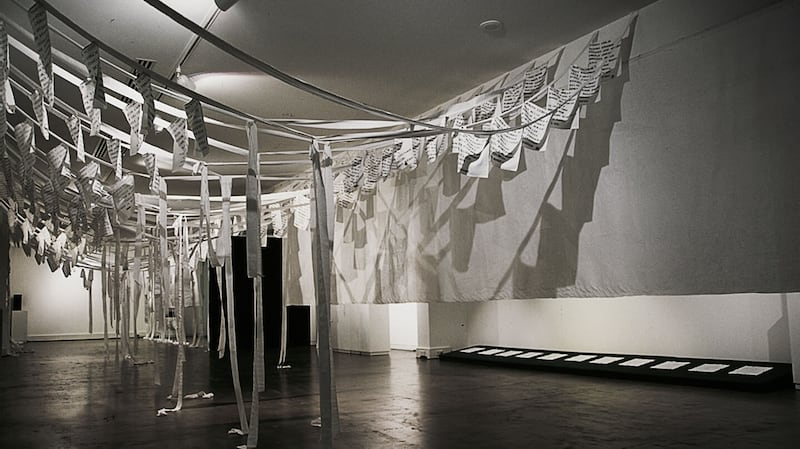
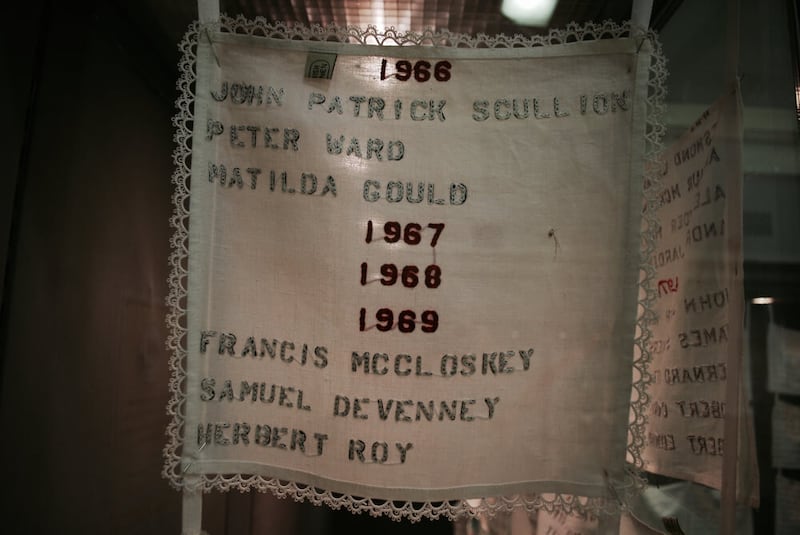
Linen, as critic Jessica Hemmings has pointed out, is the fabric used to stanch tears and the flow of blood. And as Trouton herself notes, the waving of a handkerchief was the gesture of good-bye made by the countless individuals that became our diaspora.
This “counter-monument” was inspired by Lost Lives: The Stories of the Men, Women and Children Who Died as a Result of the Northern Ireland Troubles (1999), by David McKittrick, Seamus Kelters, Brian Feeney, Chris Thornton and David McVea, a work which brings home like no other the Troubles’ atrocious toll.
Beside Banbridge’s war memorial stands a smaller one honouring members of the security services killed in the Troubles. But there is nothing to commemorate civilians such as Pat Campbell, no Stolpersteine to keep a new generation from stumbling into bad old ways. You will find a memorial to the Miami Showband in Dublin and a plaque on lead singer Fran O’Toole’s old home in Bray. But there is nothing in the town where the band had played in the hours before they were murdered.
“We are not responsible for the past,” argues Kim Wagner, historian of the British empire, “but we are responsible for what we choose to remember and what we choose to forget.”
[ The 32: An Anthology of Irish Working-Class VoicesOpens in new window ]
Martin Doyle is The Irish Times Books Editor.
